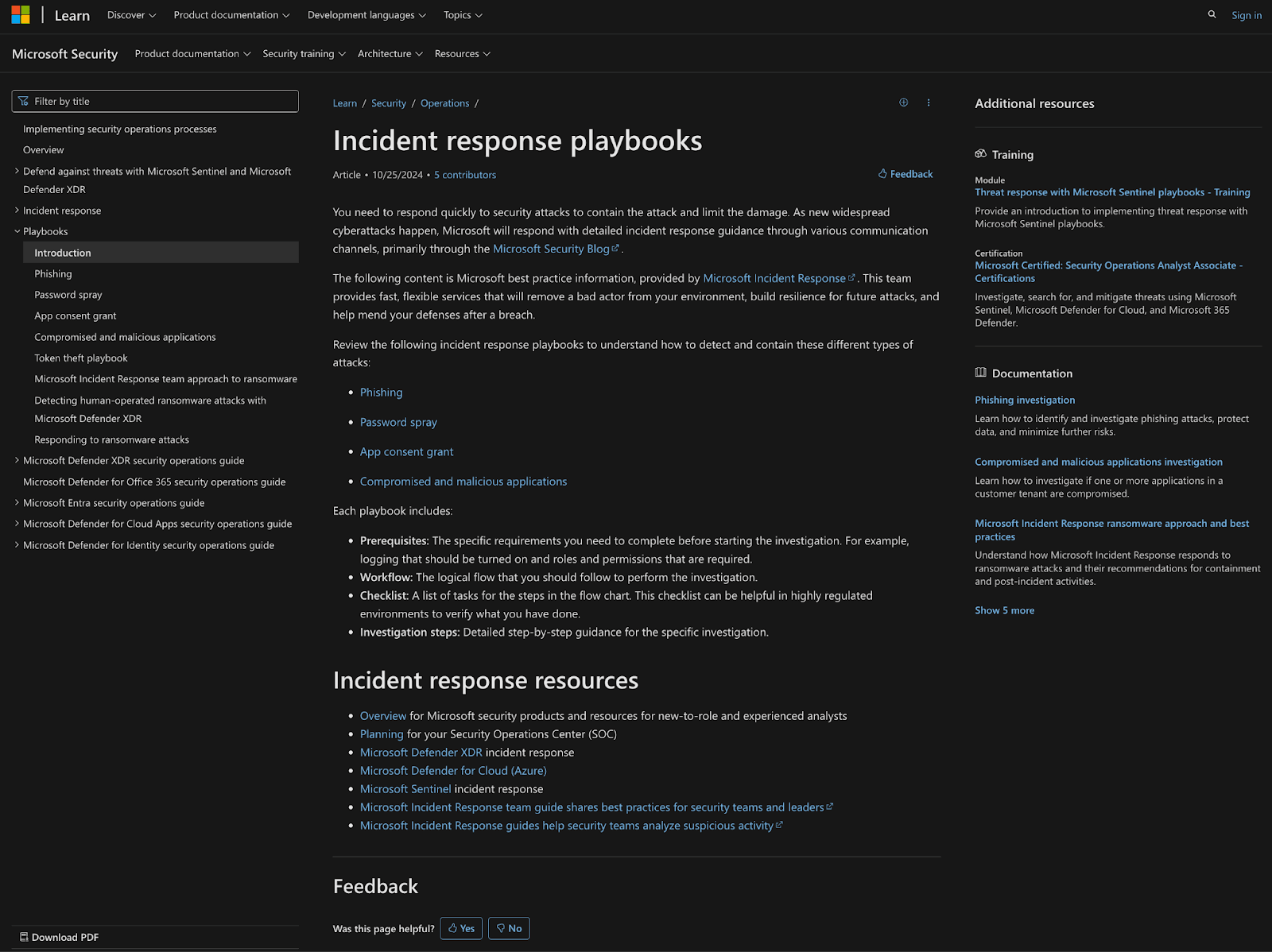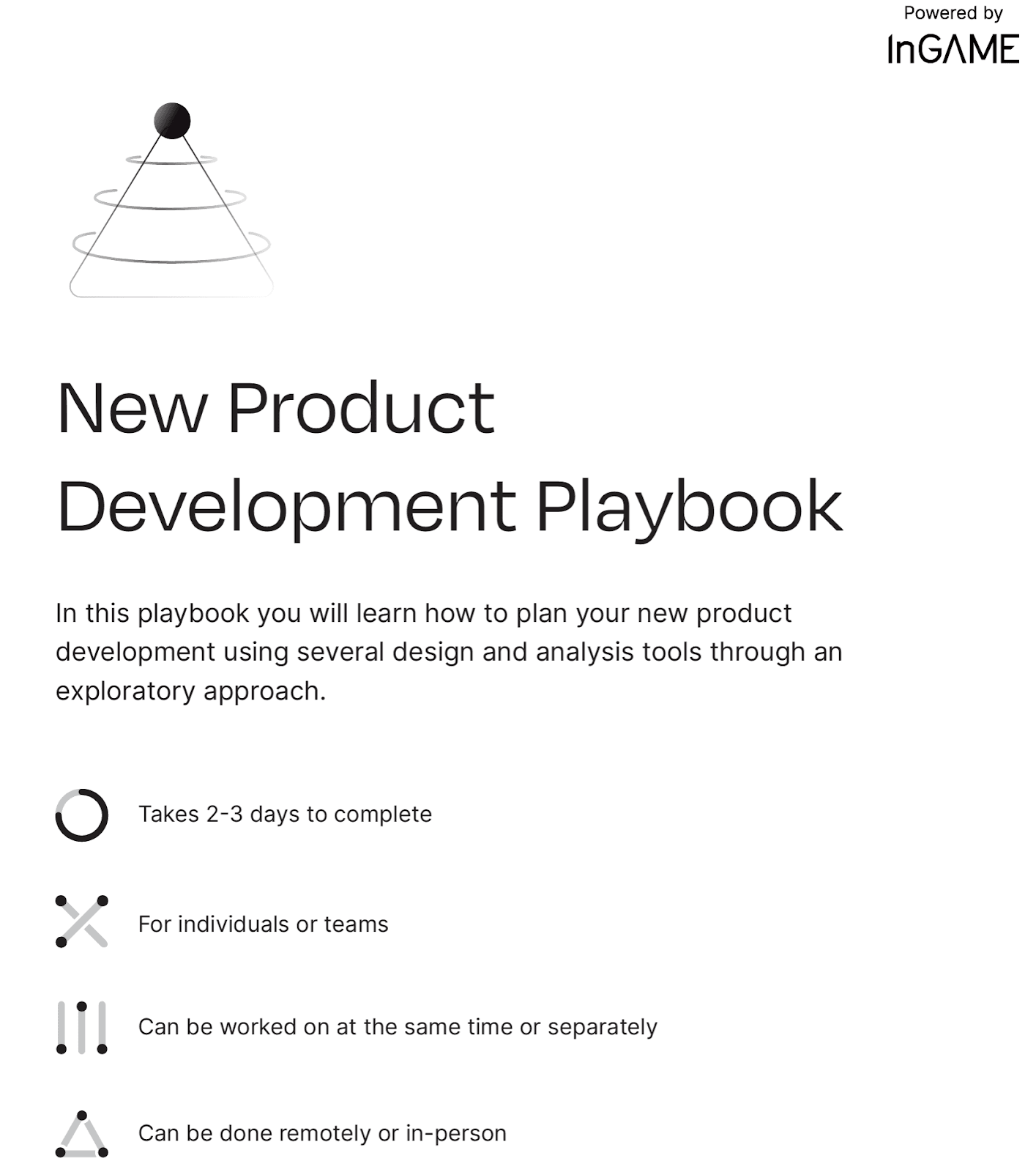Shouldn’t finding the knowledge you need take just seconds? Yet, 15 minutes later, you’re still wading through hard-to-find, poorly organized, and wordy docs that leave you wondering what to do and how to do it.
If you’ve experienced this, you’ll be happy to know that playbooks provide a library of instantly accessible, repeatable, and ready-to-use tactics for any scenario. As companies grow bigger, these guides help codify knowledge management, standardize operational procedures, and support better coordination among team members.
Below, we’ll cover all the essential details about incorporating playbooks into your knowledge management workflow, from fundamental concepts to practical techniques for building and maintaining them effectively.
What Is a Playbook?
Understanding Playbook Fundamentals
A playbook is a structured guide for coordinating the processes, workflows, and frameworks that support key organizational activities. Think of it as an instruction manual that gives you step-by-step guidance on what to do, how to do it, and the resources you need for precise contexts.
Take, for instance, the integration of AI within your department. Playbooks can either define broad strategies (i.e., agentic go-to-market engineering) or detail smaller, more specific tactics that form part of a larger strategic plan (i.e., how to write SEO-optimized content using AI tools).

All effective playbooks, no matter their case-specific characteristics, have a few core elements in common:
- A descriptive title
- An introduction that outlines the playbook’s scope
- Directions on when, why, and by whom the playbook should be implemented
- A step-by-step implementation workflow
- Pro tips, best practices, and real-world stories
- Supporting materials (e.g., cheat sheets, templates, checklists)
- Information on next steps
Comparing Playbooks to Extensive Reference Materials
Playbooks are mini-roadmaps that walk users through a series of strategic activities. They’re blueprints designed for easy-to-follow, focused, and results-oriented execution plans. Written in a casual, approachable style, they present information using a hybrid mix of formats (e.g., written instructions, video demonstrations, visual workflows).
Comprehensive reference materials, including documentation, ebooks, and white papers, provide information in a more factual manner.
Documentation, specifically, is a complete, centralized, and up-to-date source of knowledge that supports effective, safe, and regulatory-compliant product usage. Today, it’s often housed in collaborative workspaces and features plenty of visual elements (e.g., annotated screenshots, embedded videos, interactive simulations).
Although less extensive than documentation, white papers and ebooks remain static, text-heavy documents that lack the dynamic nature of playbooks.
Organizations will find it useful to incorporate playbooks into their broader knowledge ecosystem to provide more actionable, hands-on support for specific functions. These playbooks can also direct end-users to in-depth resources on products, operations, and use cases.
Exploring Real-World Playbook Examples
Playbooks have diverse applications. For instance, these manuals can provide a set of standard procedures, policies, or guidelines for identifying, responding to, and recovering from incidents as quickly as possible.

© Microsoft
Companies also use playbooks to assist their teams throughout the sales process. They can record fundamental methodologies, tools, and metrics as well as ready-to-use scripts for closing deals and responding effectively to customer objections.

© Hubspot
Another example is playbooks that support each stage of product development, from the initial concept to market release. These resources can outline techniques for product strategy, design, and development, along with expert knowledge on how to conduct market research, analyze the target audience, and implement effective team structures.

© InGAME
The Secrets to Creating Effective Playbooks
Where to Focus Your Efforts
There’s no need to write a playbook for each and every process within your organization; that’s simply not practical. Plus, if you aren’t selective about what you document, you might end up putting effort into guides that your team won’t even use.
Before you create a playbook, take some time to figure out which processes should be documented. A quick audit of your present-day operations will help you identify your core, high-impact activities.
Usually, you’ll need to create playbooks for mission-critical workflows that you carry out on a regular basis, specialized tasks that must be executed in a specific manner across the team, and processes that fall under legal or regulatory compliance.
As you go through your audit, look out for any processes that are entirely undocumented or only partially documented, as these may be causing efficiency issues that playbooks can help you optimize.
How to Structure Your Playbook
Effective playbooks follow a logical structure. The material is organized into sections, subsections, and subsubsections listed in a clickable or expandable table of contents. This systematic design allows users to explore the playbook in a structured, phased way or go straight to the information they need.
For improved readability, the playbook’s content is divided into parallel columns, arranged under informative headings, and structured according to a visual hierarchy with bold, italics, and other text styles.
Key points, tips, and important details are positioned in highlighted boxes to ensure that they’re immediately noticeable.

You can use pre-built templates and follow basic formatting rules (e.g., heading levels, line spacing, typography) to keep a uniform aesthetic across your playbook. Also, visualizing data with charts, graphs, and other visuals can make the information simpler to read through.
What Tools You Need to Build Your Playbook
Each phase of the playbook will require specific toolsets, in particular knowledge base software.
Products like Archbee offer the complete set of capabilities required for effective playbook authoring and publishing.
Archbee facilitates real-time collaborative writing, editing, and dialoguing within access-controlled Spaces. Any contributor is able to input knowledge effortlessly using the block-based editor with Markdown shortcuts, format via the WYSIWYG menu, and create more dynamic materials by incorporating emojis, rich media, and external content.
Team members can tag each other to exchange information while working together. Before publishing, they can complete all necessary checks and approvals for the playbook using the review mechanism. Then, they can host it with Archbee on their custom domain or subfolder.
Teams have the option of bringing existing documentation from platforms like Confluence and Zoomin into Archbee (or syncing their content from GitHub) and incorporating it into their playbooks.
Quick Tips for Maintaining, Updating, and Adopting Playbooks
Ownership and Accountability
The most effective playbooks are regularly updated with the latest information. So, you have to make it clear which team is given responsibility for each playbook (shared ownership) and who within that team is accountable for keeping it up to date (individual ownership).
Setting up a review schedule (whether it be weekly, monthly, or annually) will help playbook maintainers uphold accountability for information correctness. It’s also helpful to establish a system that flags urgent updates outside your usual routine and allocates responsibility for implementing, validating, and documenting any playbook changes during such situations.
Version Control and Continuous Improvement
Version control is an excellent tool for capturing the complete evolution of your playbook.
Through versioning, you’ll be able to maintain a detailed historical archive of the playbook, track changes by contributor, and keep all your teams in sync with the newest procedures in their maintenance workflows.
Going over the playbook’s history helps you reflect on how the content has been adapted over time in response to various situations. If more effective, you can revert to an earlier version at any point in time—or use parts of it for comparisons.
Team Adoption and Engagement
One effective way to amplify team interaction with playbooks is by integrating them into the company’s onboarding, training, and upskilling programs. Team members can choose to submit their feedback by upvoting, downvoting, or adding a comment to prompt playbook revisions.

An alternative strategy for enhancing employee engagement with company-wide playbooks is to ask for their input during updates. Whenever you’re refreshing these materials, create opportunities for your teammates to share their experience-gained knowledge, best practices, and how-tos.
Stop Making These Costly Playbook Mistakes
Overcomplicating Documentation
Documentation is ineffective when end-users can’t figure out how to put it into practice right away. As such, it’s preferable to keep excessive details out of your playbooks. Remember that the primary purpose of these strategic guides is to help readers quickly find, understand, and follow actionable instructions. They should get straight to the point, avoid generalities, and be easy to scan.
Just as important is to use everyday language rather than complex terminology that might confuse readers and cause them to skip important steps.
Neglecting Playbook Accessibility and Discoverability
If your playbook is nowhere to be found, it’s as if it never existed.
Companies like Sherry, Signum-Network, and KloudMate have consolidated their fragmented documentation into central repositories for improved accessibility. Likewise, you can centralize your playbooks within your organization’s main documentation ecosystem with appropriate access controls for in-house, third-party, or public user accounts.
Another key priority is to make every manual findable through search engines and instantly accessible via your portal’s search function.
Plus, don’t forget to provide PDF export options for offline access to your playbooks.

Letting Your Playbooks Become Outdated
Organizations are expected to redefine their operational strategies due to continuous technological, workforce, and social changes. Thus, playbooks that aren’t regularly audited will fall out of sync with new realities.
Verify, for example, that your sales playbook still provides up-to-date product information or that changes in operational procedures haven’t invalidated existing instructions.
Pages with outdated timestamps will visibly indicate where updates are needed.
Key Next Steps
The best playbook strategy is to keep things simple at the beginning. Start with a small, manageable workflow, see how it works out, and build on it from there.
With a tool like Archbee, you can work alongside other contributors in real-time or asynchronously to create, distribute, and manage your playbooks. You’ll have the tools to capture collective company knowledge and turn it into user-friendly, visually rich, and up-to-date guides.
If you’re feeling inspired by Archbee’s playbooks, use the platform’s free, fully-featured trial to explore all the available functionalities that can help you build similar guides.
Frequently Asked Questions
Playbooks are action-oriented guides for a specific scenario or workflow. They give step-by-step instructions, clarify who does what and when, and often include templates, checklists, and visuals to drive consistent execution. Traditional documentation is the comprehensive reference for a product or domain. It explains concepts, policies, architectures, and configurations in depth and serves as the single source of truth. When to use each: - Use a playbook to run a sales call, handle a P1 incident, ship a release, or perform a repeatable process under time pressure. - Use documentation to learn how the system works, find limits and settings, understand policies, or explore edge cases. How they fit together: A good playbook links to the underlying documentation for context, and documentation points to playbooks for the “do this now” procedures.



